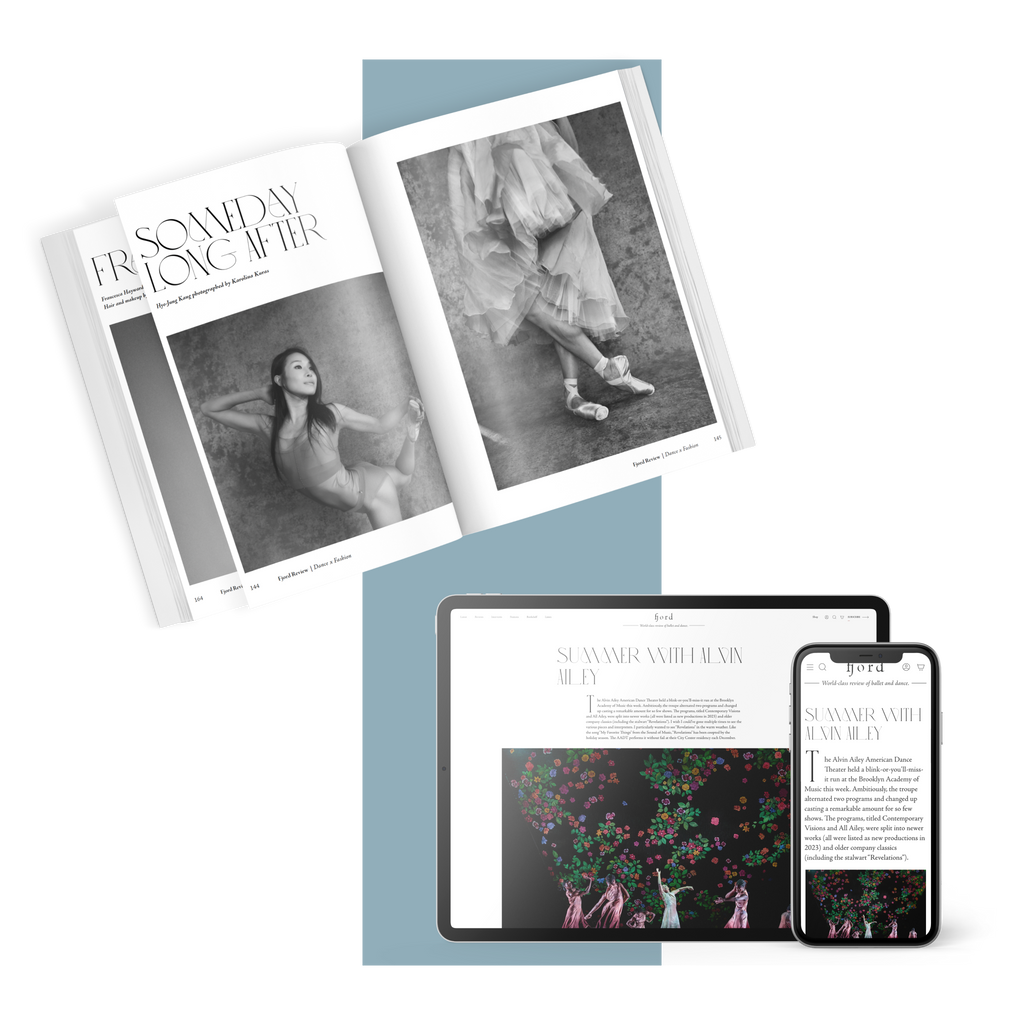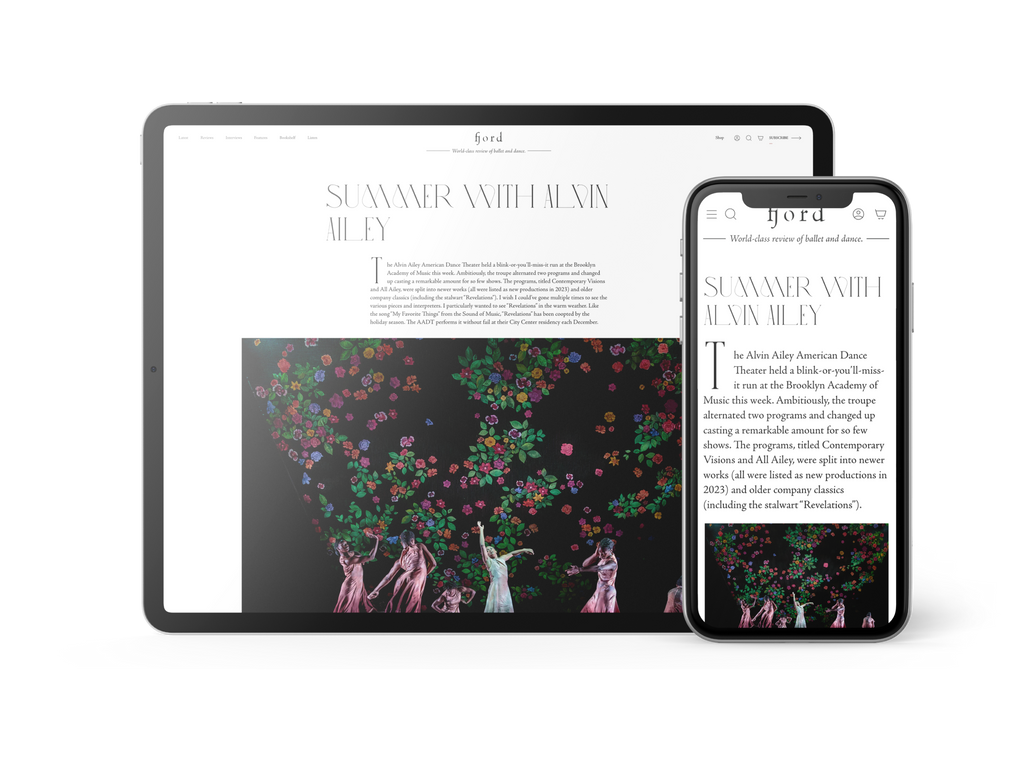Natural Histories
Miriam Miller steps into the center and raises her arm with deliberation, pressing her palm upward to the vaulted Gothic ceiling of the cathedral.
Continue Reading
World-class review of ballet and dance.
Like Baz Luhrmann before him, Matthew Bourne’s contemporary reworking of “Romeo and Juliet” adds a coat of grit to fair Verona. Gone are the marbled columns and wrought-iron balconies of the Capulet court; it’s all sheetrock and cold metal bars at the Verona Institute, a juvie-asylum hybrid where disaffected teens are doped into submission. Absent too are the feuding families. Romeo’s parents are shellacked politicians, eager to hand their son over for medicated safekeeping, while Juliet’s are absent from the picture altogether. A legion of tyrannical guards stand in the way of our star-crossed lovers, commanded by a nightmarish Tybalt whose predation of Juliet escalates into rape just minutes into the show.
Performance
Place
Words

Seren Williams and Andrew Monaghan in Matthew Bourne's “Romeo and Juliet.” Photograph by Johan Persson


“Uncommonly intelligent, substantial coverage.”
Your weekly source for world-class dance reviews, interviews, articles, and more.
Already a paid subscriber? Login
Miriam Miller steps into the center and raises her arm with deliberation, pressing her palm upward to the vaulted Gothic ceiling of the cathedral.
Continue ReadingIn a series called “Just Dance” on Nowness—a site I sometimes visit to see what’s up in the world of “genre busting” dance films that make it onto this stylized platform—I sometimes find little gems that quietly rock my world.
Continue ReadingBack in October, New York City Ballet got a new cowboy. His arrival occurred in the final section of George Balanchine’s “Western Symphony.”
Continue ReadingWhen Richard Move enters from stage left, his presence is already monumental. In a long-sleeved gown, a wig swept in a dramatic topknot, and his eyes lined in striking swoops, the artist presents himself in the likeness of Martha Graham—though standing at 6’4, he has more than a foot on the late modern dance pioneer.
Continue Reading
comments